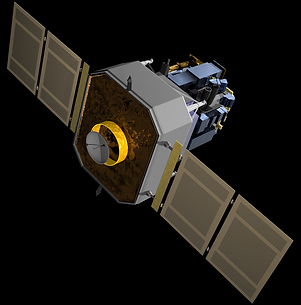Space based instruments
Parker Solar Probe will be the first man-made mission to explore the Sun at distances as close as 10 million km from the Solar Surface. It has a suite of instruments capable of operating at multiple wave bands to study the solar corona and the solar wind in-situ.
Solar Orbiter is an ESA mission to make images of the Sun and study the solar wind in-situ. It will reach distances close to 42 million km from the Solar Surface. It aims to understand coronal heating, the periodicity of the solar cycle, and the genesis of the Solar Wind. Datasets for both in-situ and remote sensing instruments can be found here.
Solar Dynamics Observatory is a NASA mission that studies small-scale spatio-temporal in the solar magnetic fields through multiwavelength observations. It hosts Atmospheric Imaging Assembly that images the sun in multiple wavelength channels ranging from visible to ultra-violet.
SOHO is an ESA mission that is at the Sun-Earth L1 position, consisting of 12 instruments to study the solar atmosphere, solar wind, and helioseismology. SOHO includes instruments like LASCO, MDI, EIT, and GOLF to name a few.
STEREO employs two nearly identical space-based observatories - one ahead of Earth in its orbit, the other trailing behind - to provide the first-ever stereoscopic measurements to study the Sun and the nature of its coronal mass ejections, or CMEs.
Launched in 2013, IRIS is a NASA SMEX mission whose goal is to understand how the solar atmosphere is energized. IRIS records UV spectra and images with high resolution in space (0.33-0.4 arcsec) and time (1-2s) focused on the chromosphere and transition region of the Sun, a complex interface region between the photosphere and corona. Datasets can be found here.
Kodaikanal Solar Observatory is operated by the Indian Institute of Astrophysics. It has multiple telescopes that perform imaging and spectroscopy of the Sun in many visible wavebands. The KSO has more than 100 years of historical continuous solar observations in white light, Ca-K, and H-alpha making it the longest continuous series of solar data.
The Data of KSO can be accessed from here.









